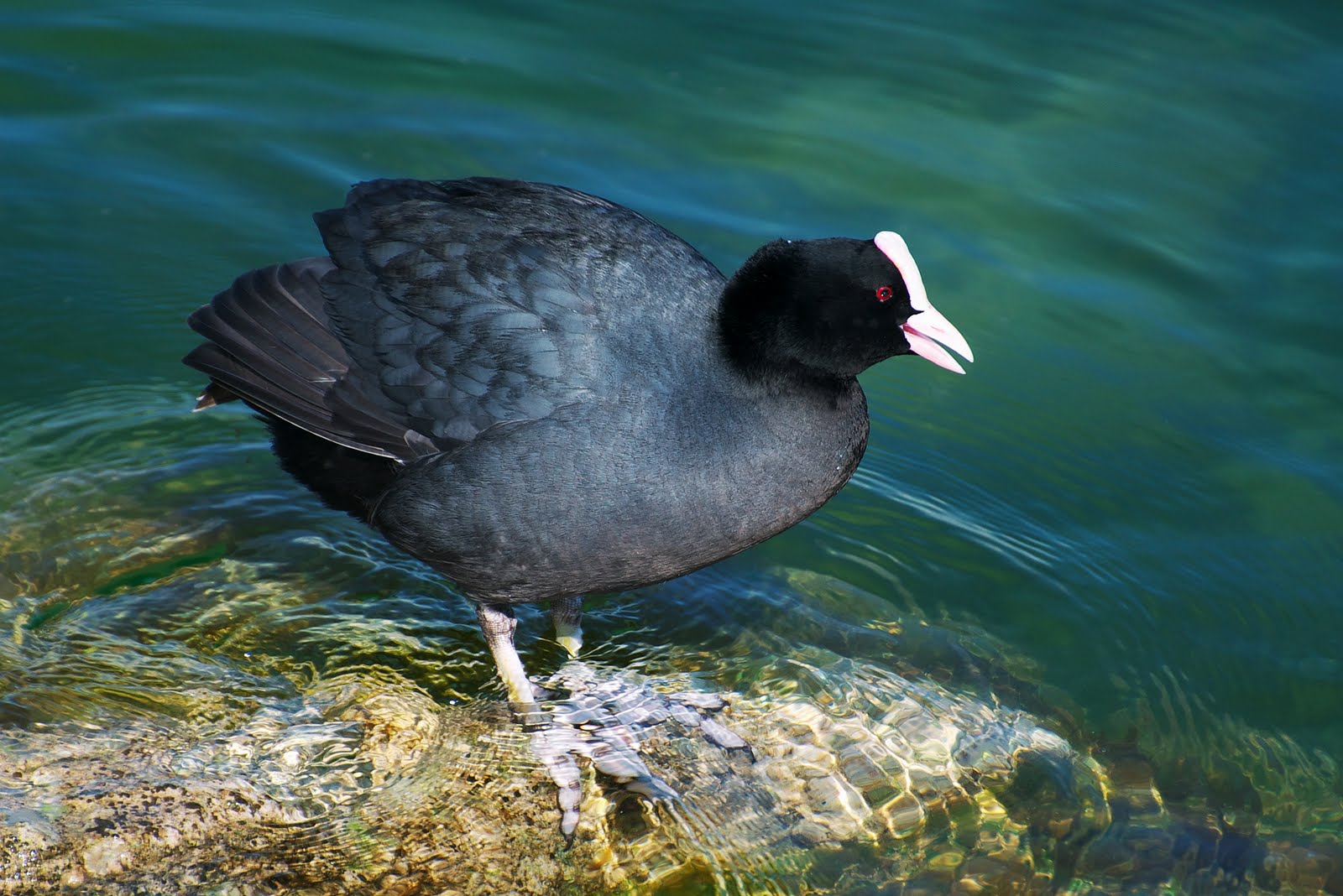
NW Bird Blog Eurasian Coot
Coots live all over the world. The Eurasian Coot, Fulica atra, live in Australia, but there are also Coot species found in New Guinea, Europe, India, China, Indonesia, North Africa and New Zealand. Fast facts: Have you ever heard the expression, "As bald as a Coot"?
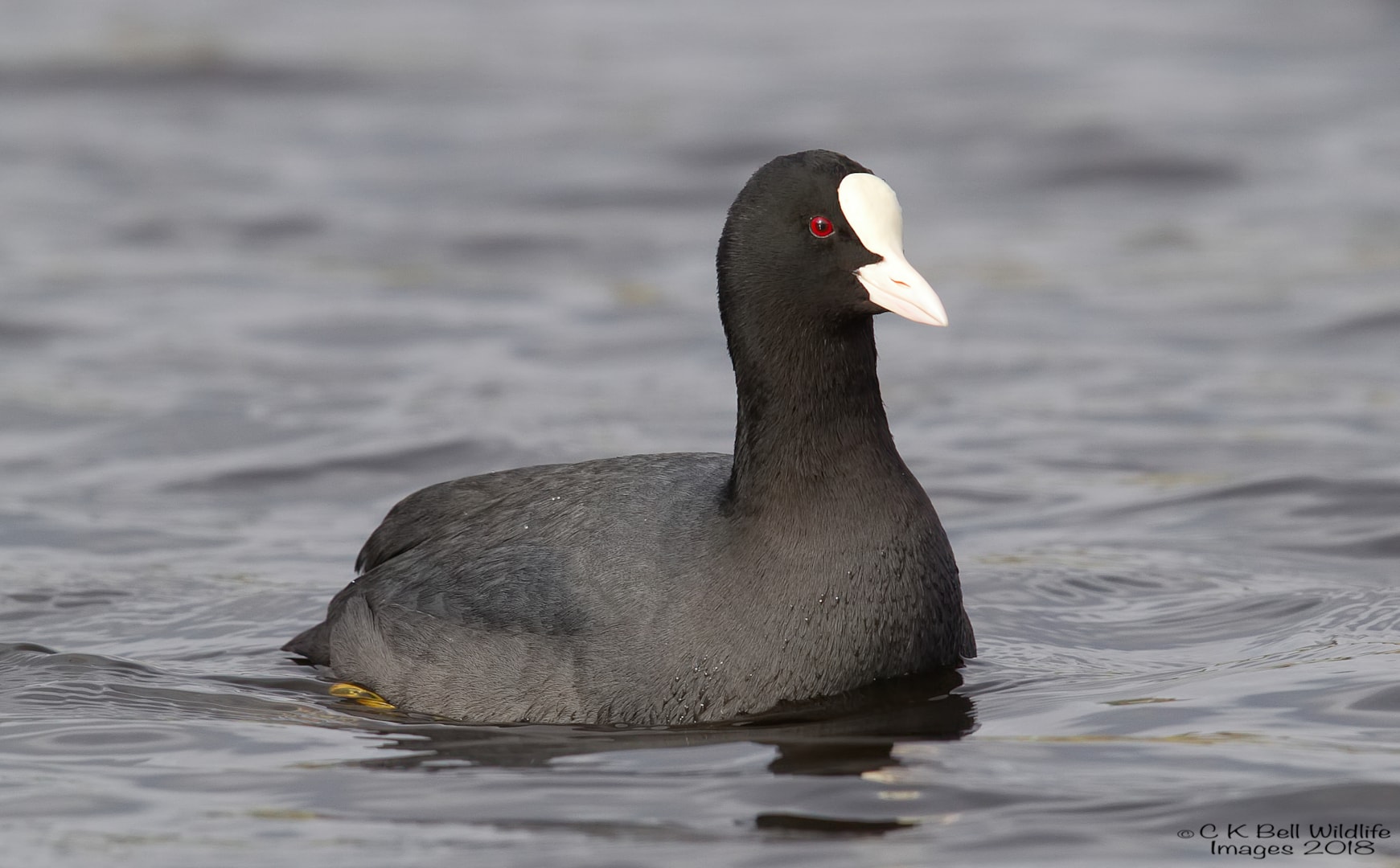
Eurasian Coot by Craig Bell BirdGuides
A large, blackish aquatic crake with prominent white bill and frontal shield. Looks tailless. Sootyblack head and neck with a more grey than black body and whitish trailing edge to wings. Sexes alike. Juvenile has whitish throat and foreneck, grey bill with no shield. Greenish feet. Feeds on vegetable matter.
Eurasian Coot BirdForum
Barry Taylor and Guy M. Kirwan Version: 1.0 — Published March 4, 2020 Text last updated September 5, 2015
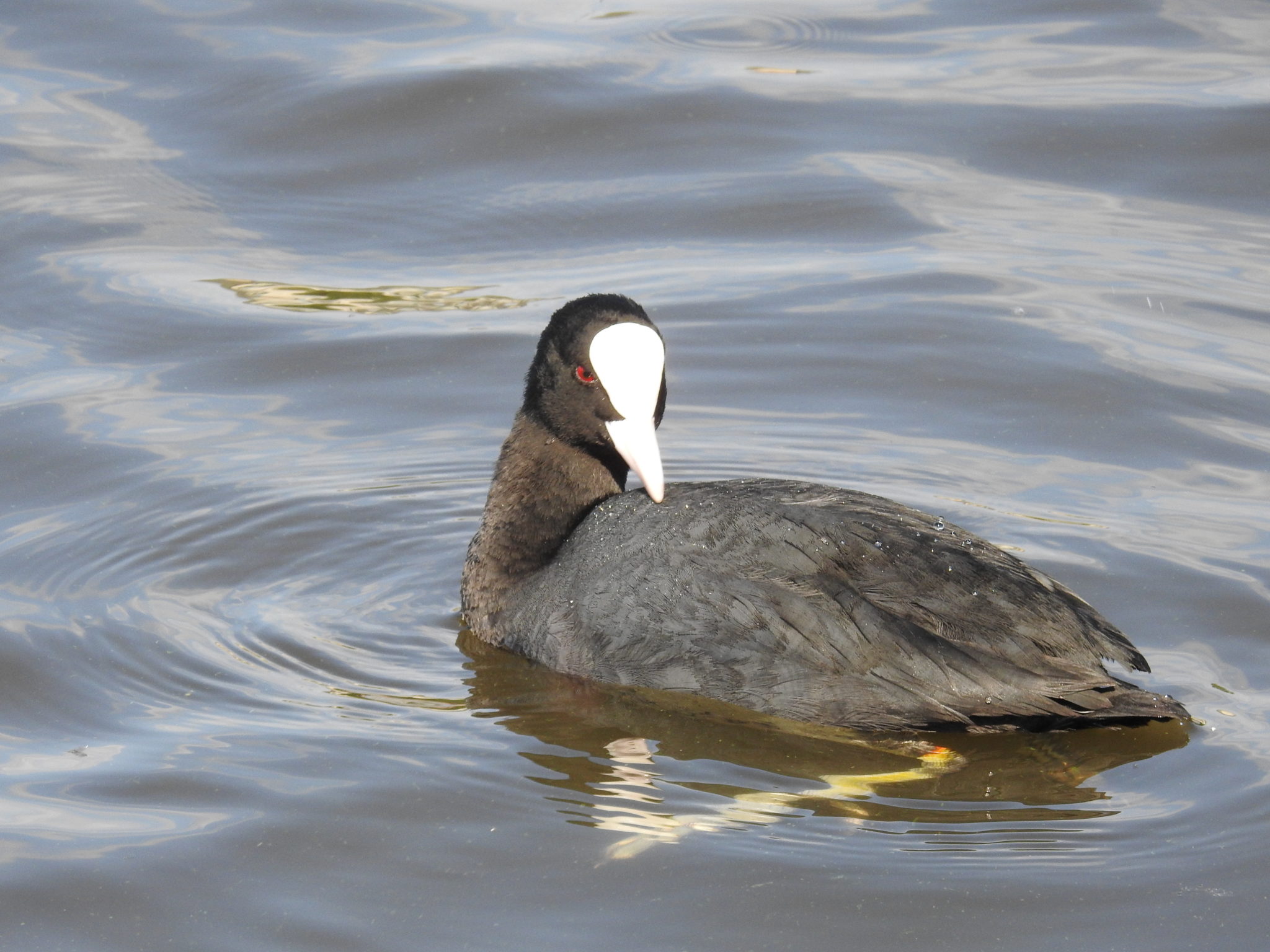
Eurasian Coot in Hamburg Germany Great Bird Pics
Coots are medium-sized water birds that are members of the rail family, Rallidae. They constitute the genus Fulica, the name being the Latin term for "coot". Coots have predominantly black plumage, and—unlike many rails—they are usually easy to see, often swimming in open water. Taxonomy and systematics
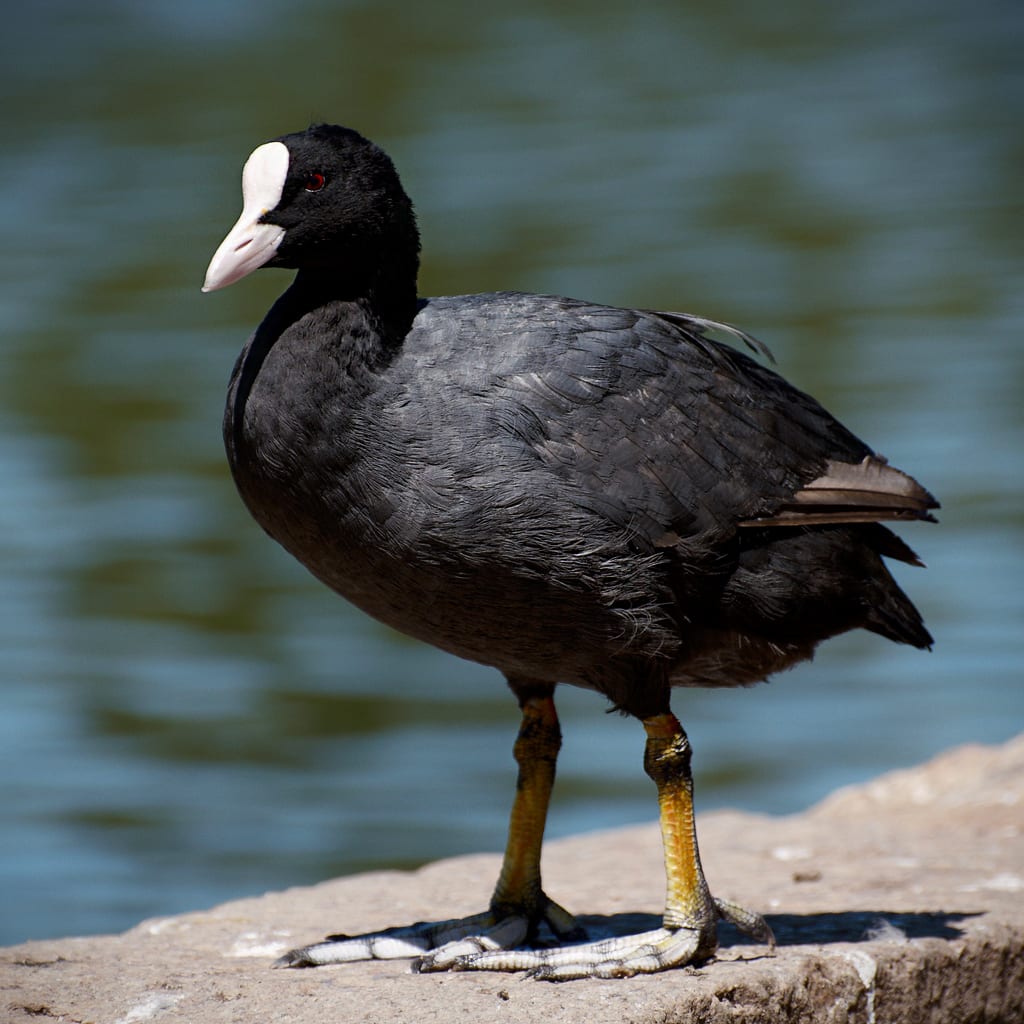
Eurasian Coot eBirdr
Beak Black, White Conservation status Green
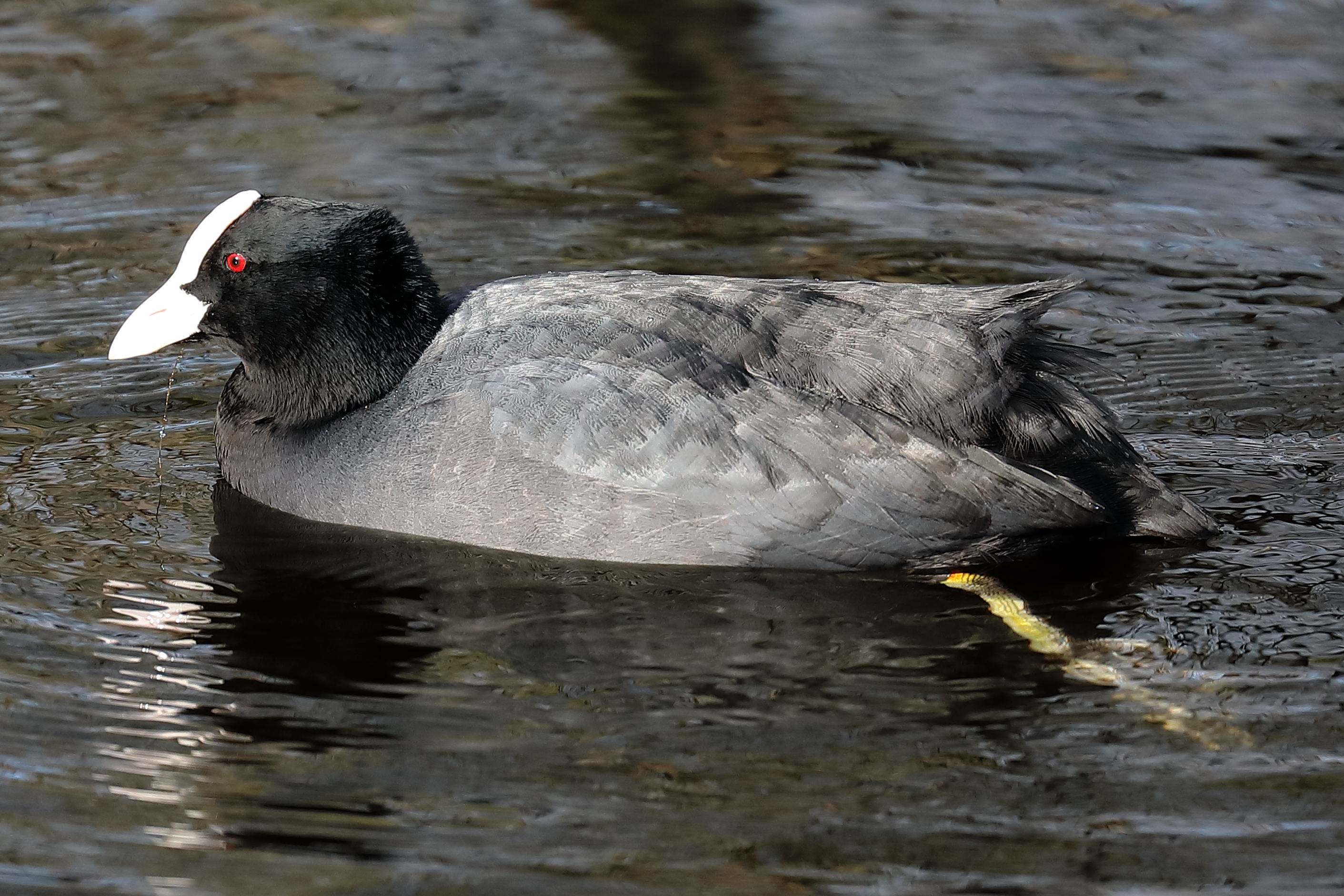
Eurasian Coot by PETER MILES BirdGuides
Eurasian Coot Common coot, Australian coot 13 languages Kingdom Animalia Phylum Chordata Class Aves Subclass Neornithes Infraclass Neognathae Superorder Neoaves Order Gruiformes Family Rallidae Genus Fulica SPECIES Fulica atra Population size 7.9-9.75 Mlnlnn Life Span 9-15 years Weight 750-890 g oz Length 36-38 cm inch Wingspan 70-80 cm inch
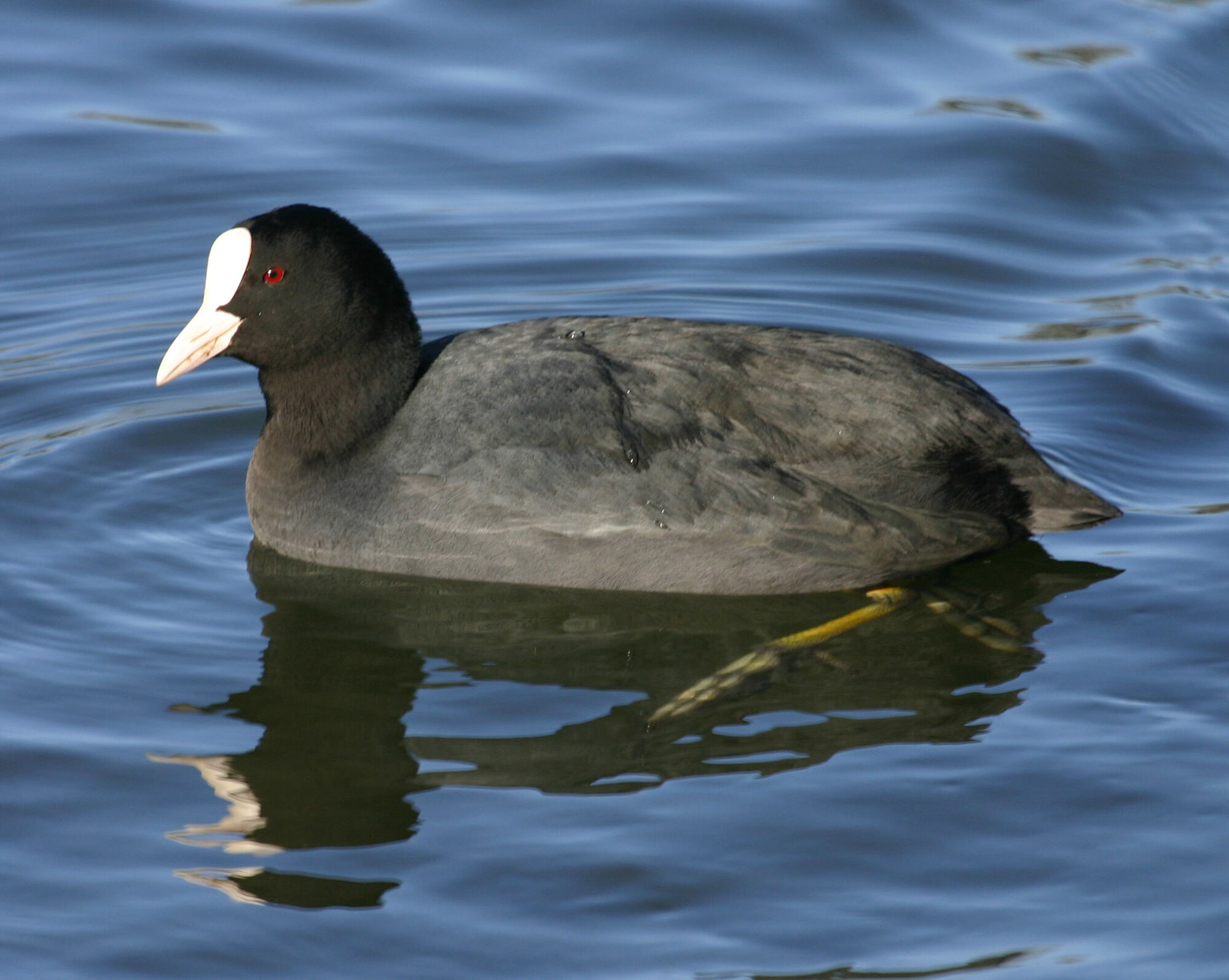
Eurasian Coot Animal Database FANDOM powered by Wikia
E urasian Coot (Fulica atra) is a species of bird in the Rallidae family. Larger than the moorhen (with which some confuse it), the Eurasian coot is a rounded bird. Its plumage seems entirely black, in fact it is anthracite-grey. The toes of the Eurasian Coot are not webbed, but provided with lobes.
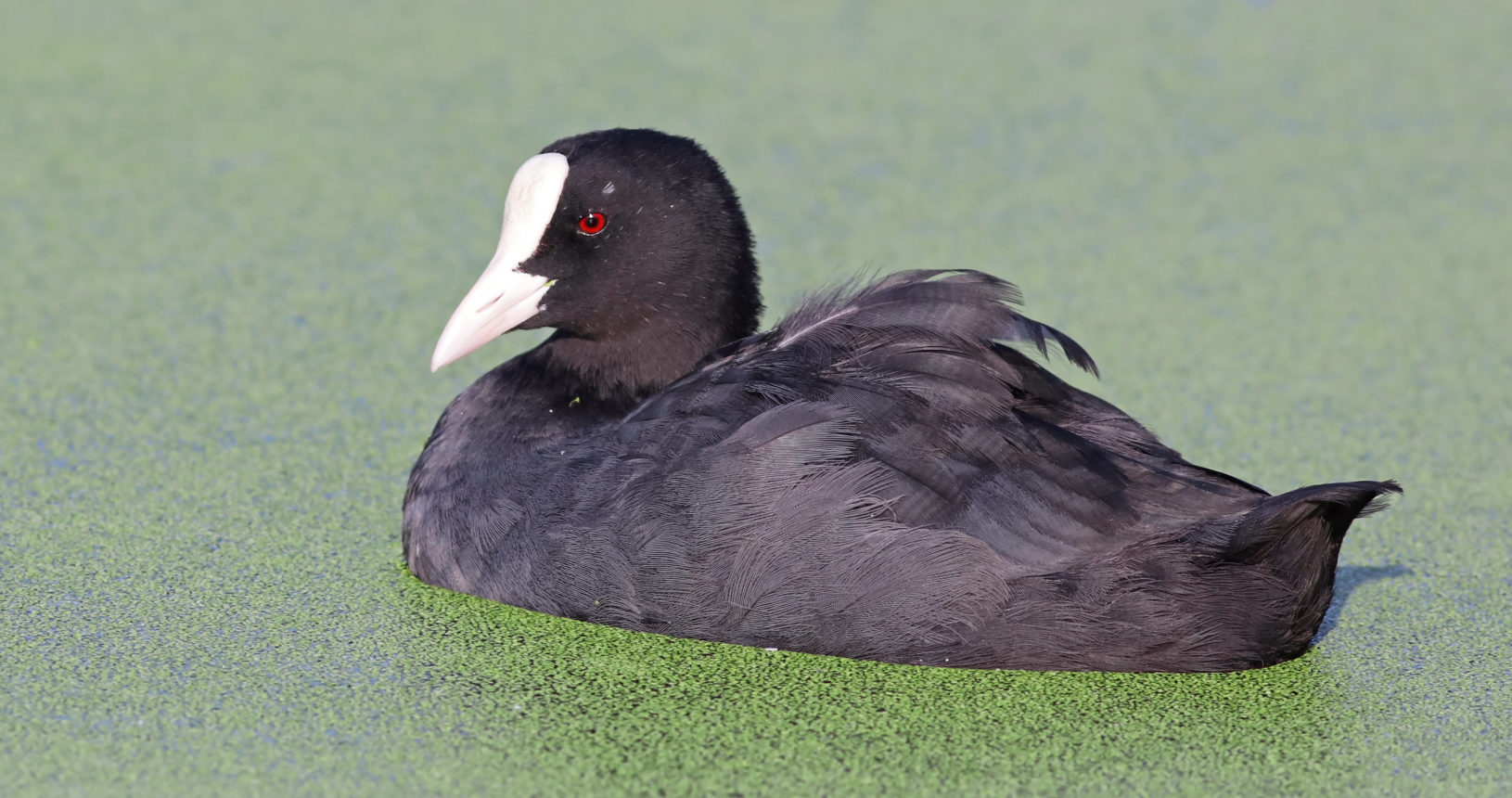
Common Coot Flight for Survival
Eurasian coot ), also known as the Australian coot, is a member of the rail and crake bird . It is found in Europe, Asia, Australia, New Zealand and parts of North Africa. [3] It has a slaty-black body, a glossy black head and a white bill with a white frontal shield. The sexes are similar.

Bird of the week Eurasian Coot Fulica atra Kimberley Jane Pryor
Description: The Eurasian Coot is recognised by its snowy white bill and forehead shield. The remainder of the bird is dark sooty grey, except for its bright red eye. Immature birds are generally paler than adults with a white wash on the throat. Nestlings are downy, black with fine yellow tips.
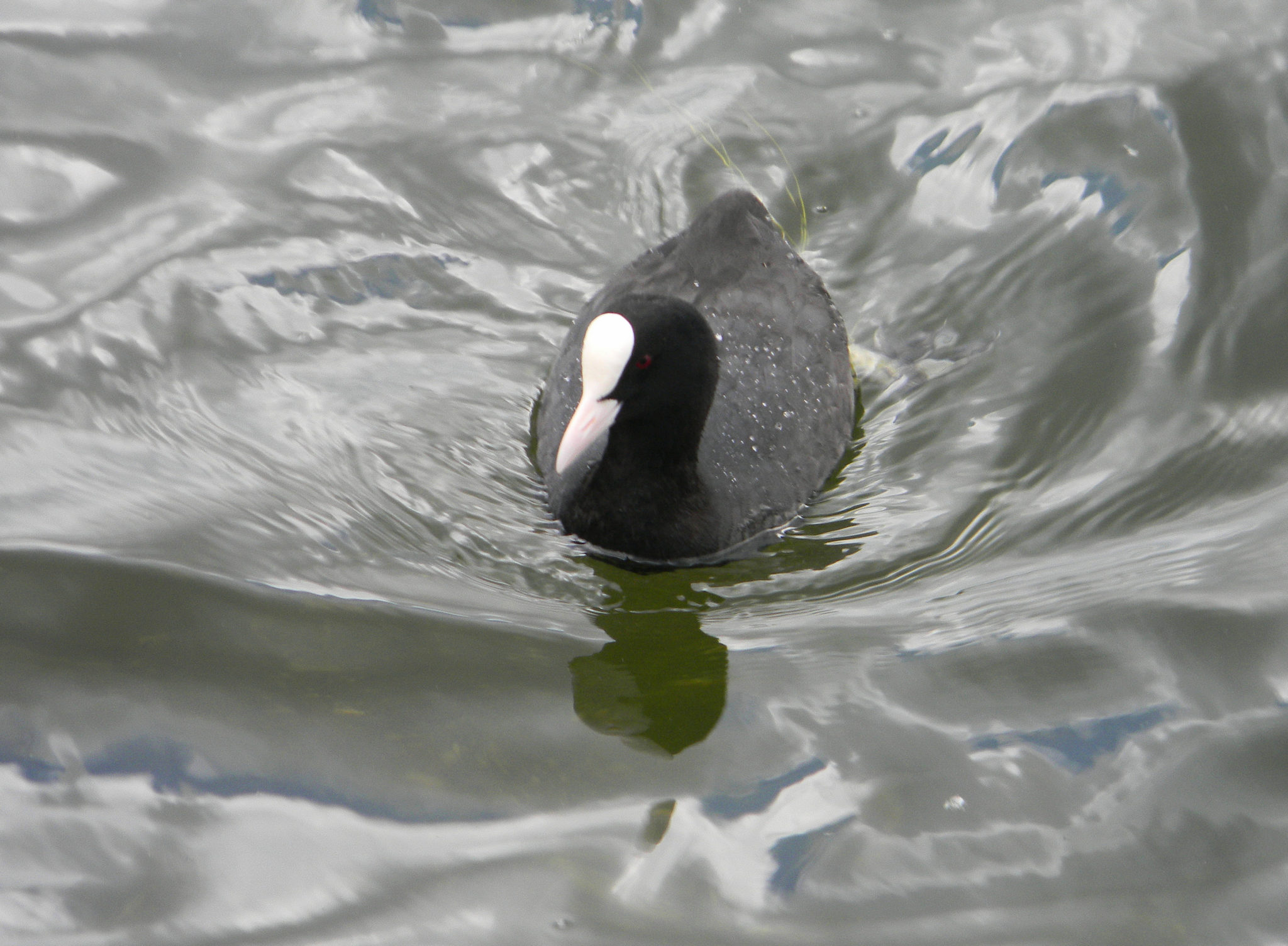
Eurasian Coot Great Bird Pics
Size: 40.5-42.5 cm Identification: Adult has overall slaty-black plumage and diagnostic all white bill and frontal shield. Juvenile has light-grey to greyish brown plumage and whitish throat. Similar looking species: Common Moorhen Habitat: Freshwater wetlands.

Birds of The World Coots, Moorhens (Rallidae)
The Eurasian coot is mainly a fresh water wading bird that prefers relatively shallow large open lakes, reservoirs, ponds and gravel pits with static or slow moving water. Out of the breeding season in the winter they will also choose salt water estuaries and inshore seawater.

Eurasian coot Free Photo Download FreeImages
The Eurasian Coot is a large water bird, larger than the Moorhen and less discreet. It has a very dark plumage, grey-anthracite, which can appear black from a distance, and against this black there is a white beak and forehead patch. This white is shaded with pink in the nuptial adult. The body is compact and rounded.

Eurasian Coot by Peter Miles BirdGuides
Distinctive stocky waterbird. Adult is dark gray overall with a white bill and forehead shield. Immature has a pale breast and a duller bill that becomes brighter white with age. When walking on shore, note big feet with lobed toes. Inhabits both freshwater and brackish marshes, lakeshores, and riverways; occasionally on saltwater. Breeding pairs aggressively territorial but nonbreeding flocks.
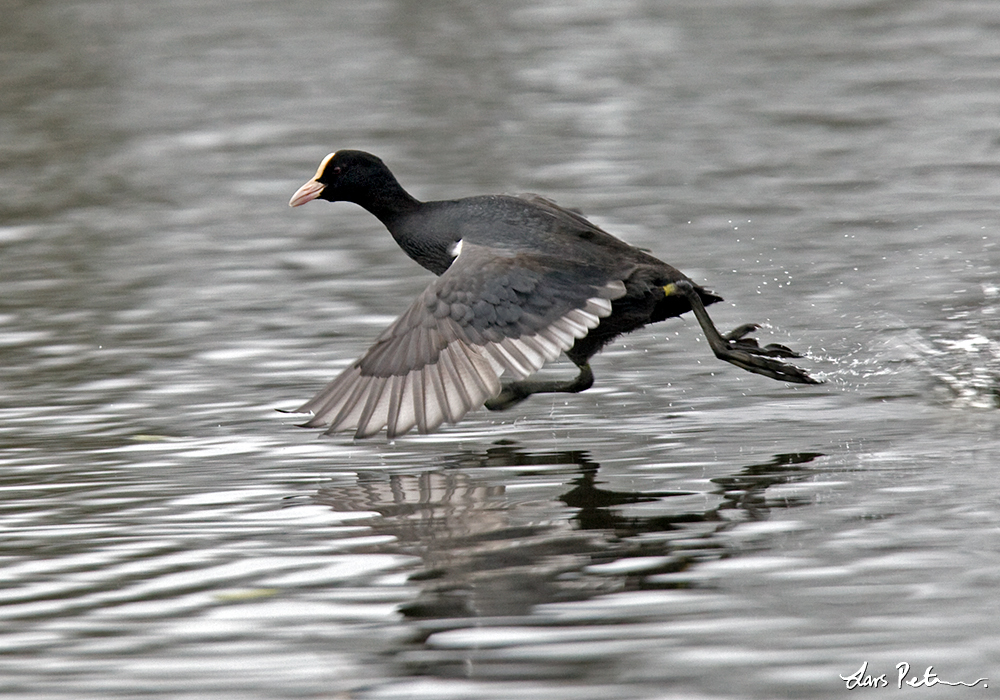
Eurasian Coot Rails, Crakes, Coot and Crane Swedish Birds Gallery
The Eurasian coot (Fulica atra), also known as common coot, is a rail-like waterbird with an extensive Old World distribution.It is found from Europe, across Asia and parts of Africa, all the way to Australia and New Zealand. It is an easily distinguishable bird, with a sooty black plumage, large yellowish-green legs, red eyes and a conspicuous white beak and frontal shield.

Eurasian coot Wikipedia
The Eurasian coot, also known as the common coot, or Australian coot, is a member of the rail and crake bird family, the Rallidae. It is found in Europe, Asia, Australia, New Zealand and parts of North Africa. It has a slaty-black body, a glossy black head and a white bill with a white frontal shield. The sexes are similar.
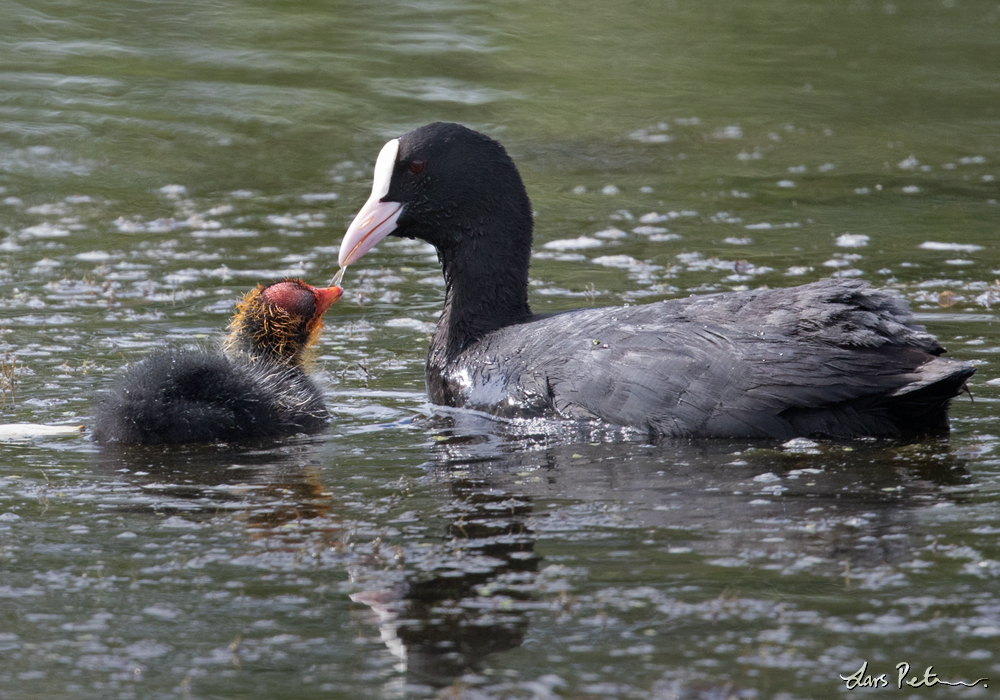
Eurasian Coot Rails, Crakes, Coot and Crane Swedish Birds Gallery
Eurasian Coots (Fulica atra) are common water-dwelling birds found in Europe, often found in similar places as Moorhens. Eurasian Coots measure 36-39 cm in length, 70-80 cm in wingspan, and 300-1200 g in weight. Adults have a jet black back, wings, neck, underparts, head and tail. The only parts of adult birds that aren't black are its beak and frontal shield, which are white, its feet.